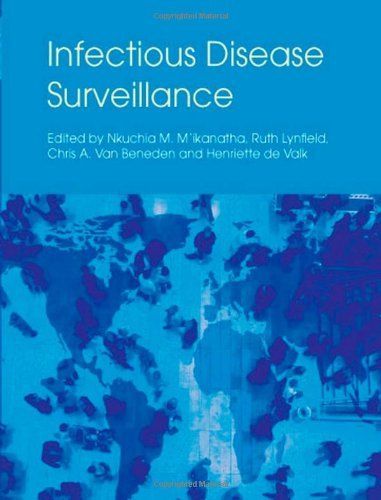
Infectious Disease Surveillance
This fully updated edition of Infectious DiseaseSurveillance is for frontline public health practitioners,epidemiologists, and clinical microbiologists who are engaged incommunicable disease control. It is also a foundational textfor trainees in public health, applied epidemiology, postgraduatemedicine and nursing programs. The second edition portrays both the conceptual framework andpractical aspects of infectious disease surveillance. It is acomprehensive resource designed to improve the tracking ofinfectious diseases and to serve as a starting point in thedevelopment of new surveillance systems. Infectious DiseaseSurveillance includes over 45 chapters from over 100contributors, and topics organized into six sections based on majorthemes. Section One highlights the critical role surveillanceplays in public health and it provides an overview of the currentInternational Health Regulations (2005) in addition to successesand challenges in infectious disease eradication. Section Two describes surveillance systems based onlogical program areas such as foodborne illnesses, vector-bornediseases, sexually transmitted diseases, viral hepatitis healthcareand transplantation associated infections. Attention is devoted toprograms for monitoring unexplained deaths, agents of bioterrorism,mass gatherings, and disease associated with internationaltravel. Sections Three and Four explore the uses of the Internetand wireless technologies to advance infectious diseasesurveillance in various settings with emphasis on best practicesbased on deployed systems. They also address molecular laboratorymethods, and statistical and geospatial analysis, and evaluation ofsystems for early epidemic detection. Sections Five and Six discuss legal and ethicalconsiderations, communication strategies and appliedepidemiology-training programs. The rest of the chapters offerpublic-private partnerships, as well lessons from the 2009-2010H1N1 influenza pandemic and future directions for infectiousdisease surveillance.